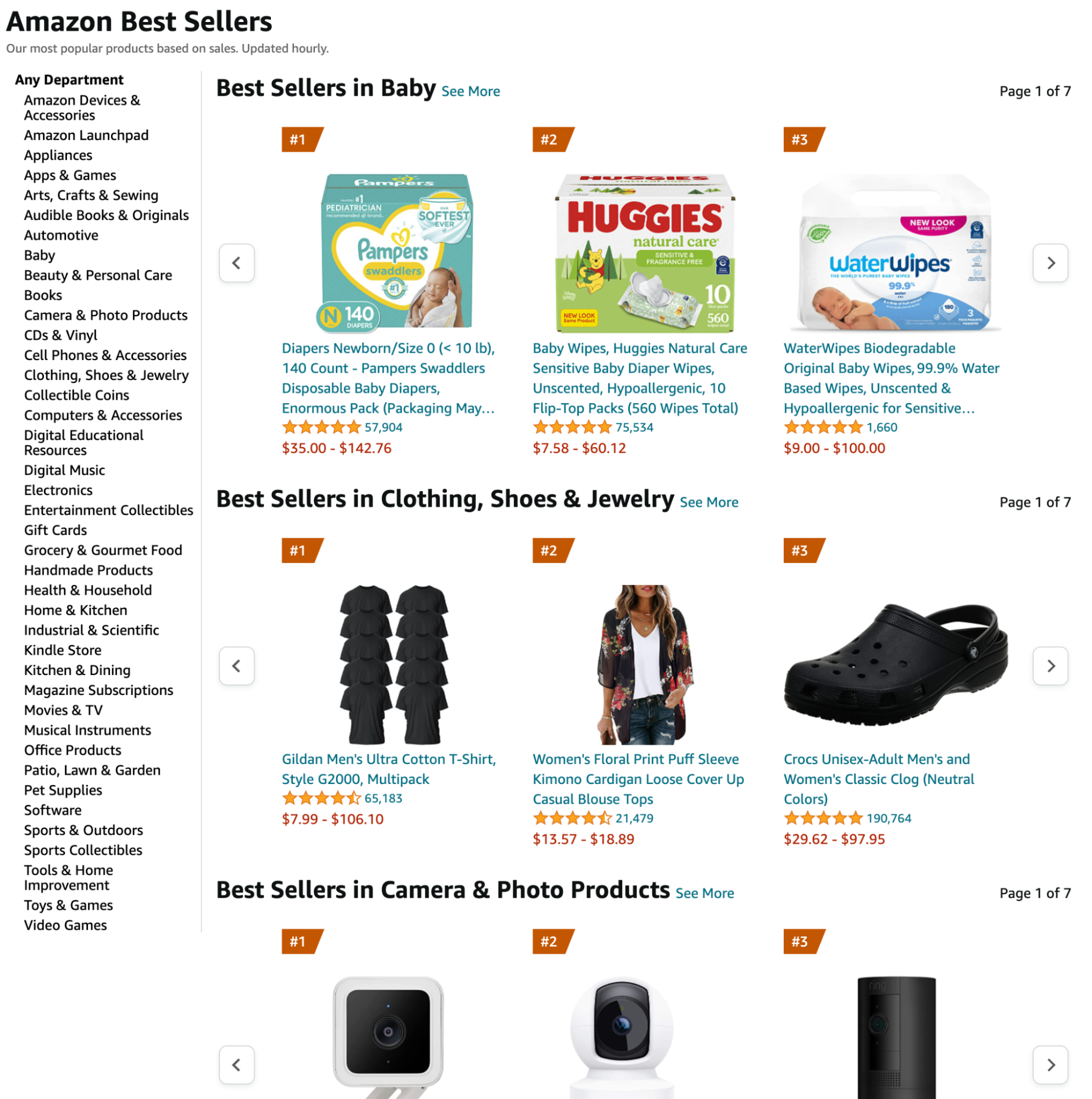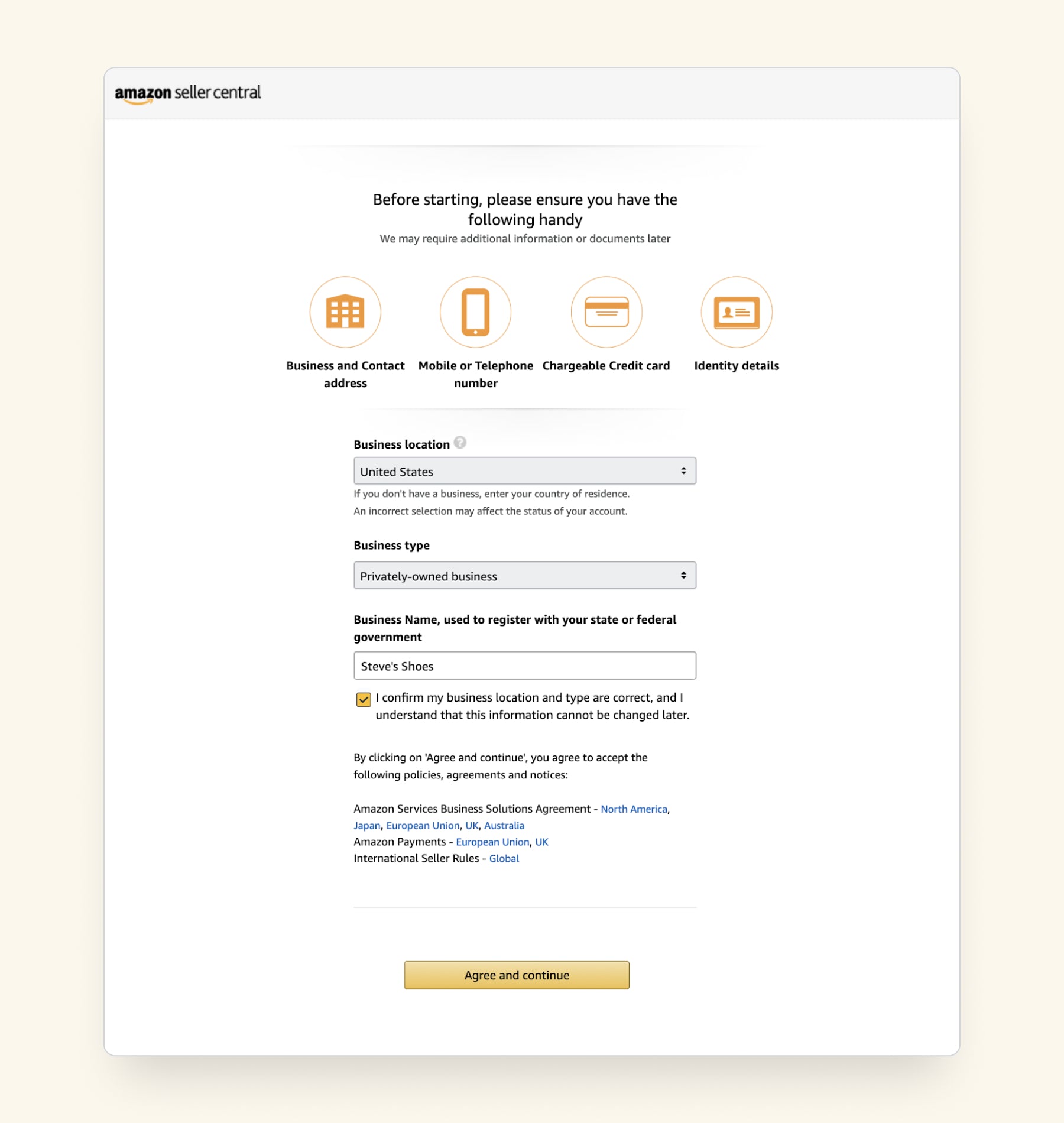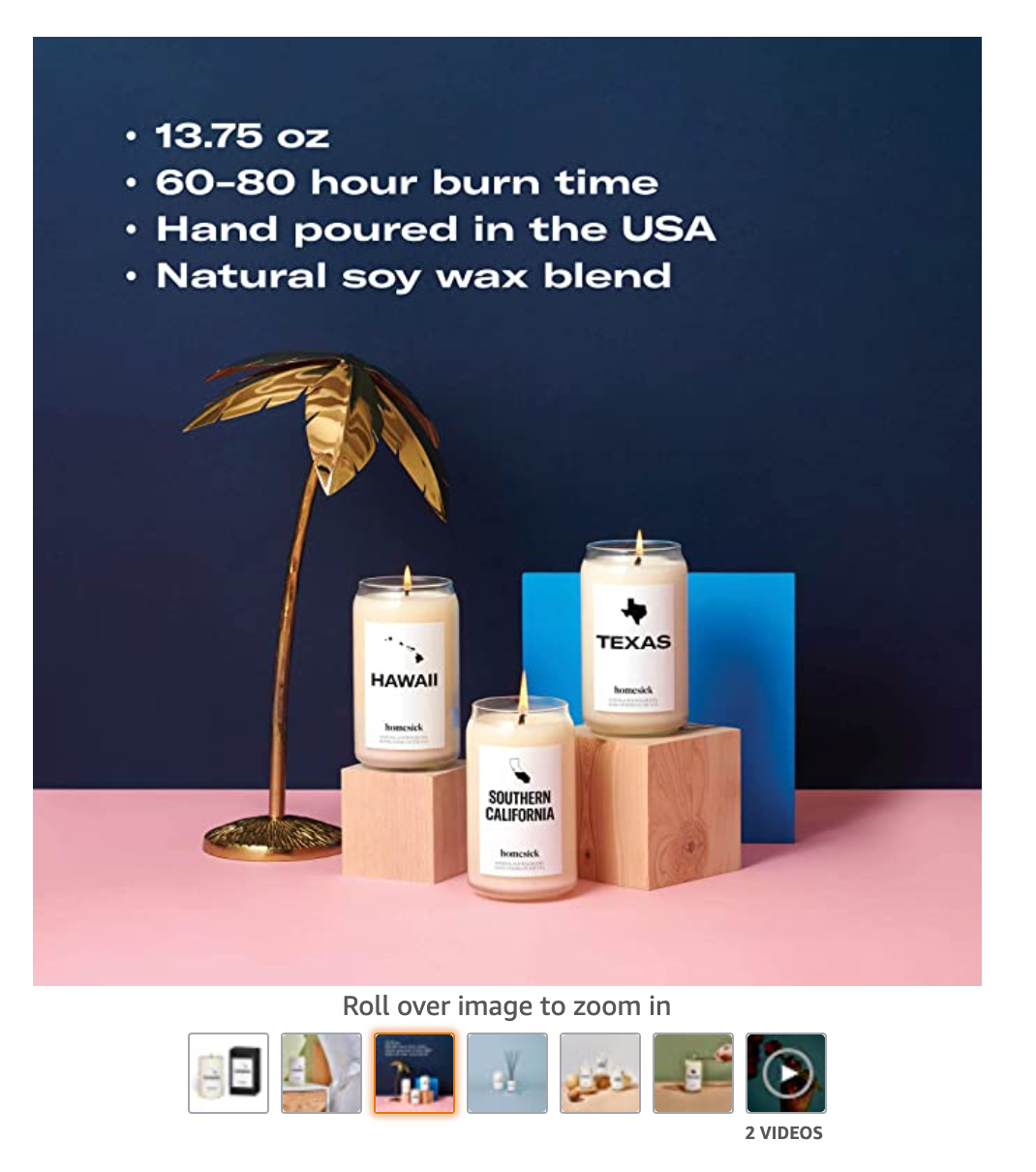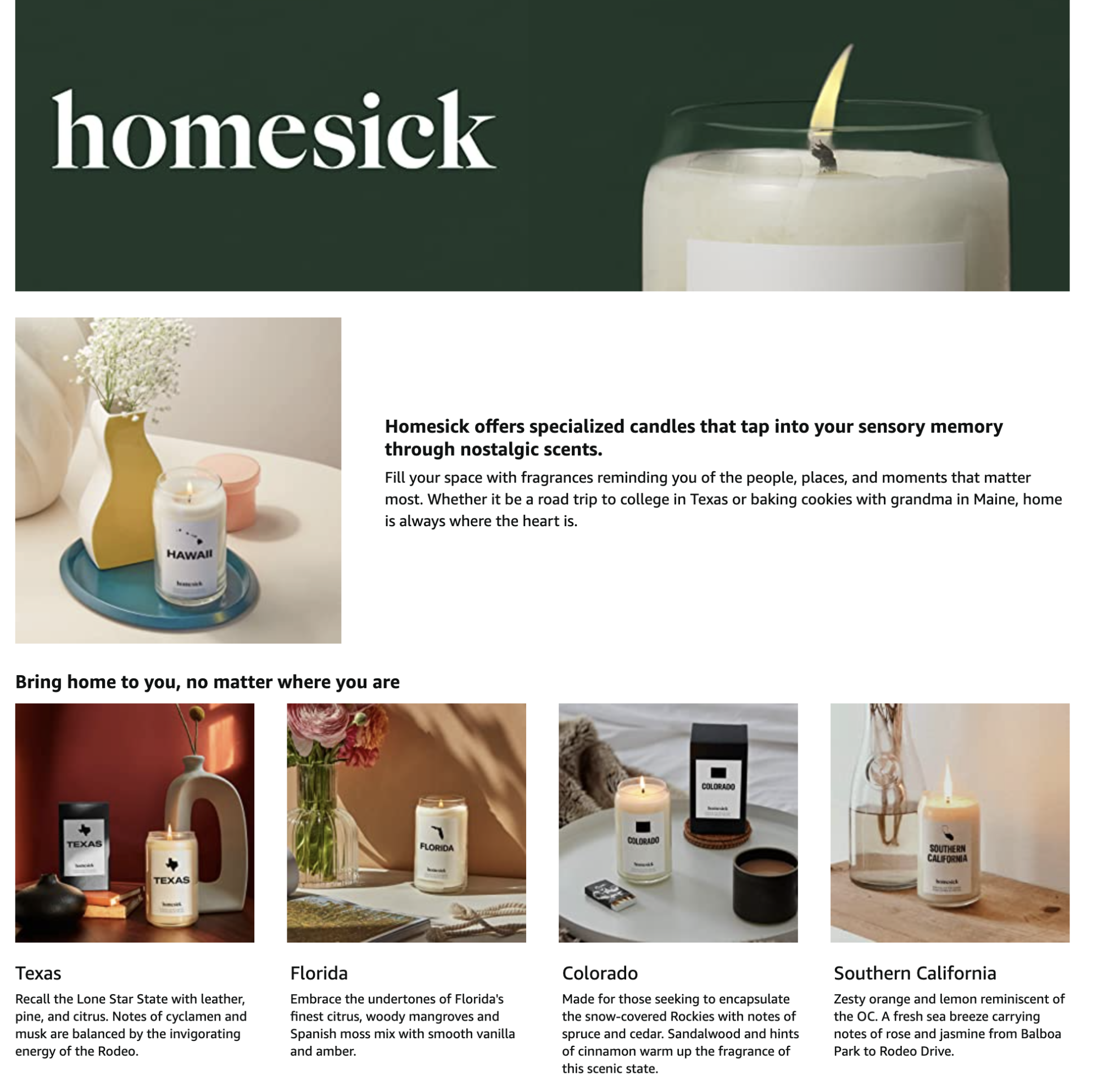1. Figure out what you’ll sell
The strategy for your Amazon business should cover what types of products you’ll sell and how you’ll obtain them. There are a few common ways to sell on Amazon:
Retail arbitrage. If you buy something below market value and sell it at a higher price while profiting off the difference, that’s retail arbitrage. Amazon sellers can search through different markets for things on sale or on clearance, such as Target, Best Buy, or Big Lots, then sell it on Amazon for a higher price.
Retailer arbitrage is a good way to make quick cash, but it can be time consuming. Resellers are always in competition with other people selling the same products. If you can’t sell a product fast enough, you’re stuck with it unless you sell at a loss.
White labeling. Generic products with your own brand name or logo added are known as white label products. You can bulk order white label products, dropship them, or have them printed on demand. Amazon sellers find it easier to white label products because they can skip product research and get right to selling. You don’t need to have any manufacturing or product design experience to sell white label products.
Private labeling. Private labeling is the process of creating branded products using a third-party manufacturer. Amazon already has an established audience, which makes private label products an attractive option for Amazon sellers. Popular categories include apparel, skin care, cosmetics, food, hair care, and supplements. You can find private label products through marketplaces like Alibaba or Thomasnet.
Affiliate marketing. If you don’t want to deal with finding products to sell, you can start an Amazon affiliate marketing business. You just need to choose the products you want to sell and promote them to your audience—be it on your website, Instagram, or TikTok accounts. Amazon will give you a unique link to include in your content. When someone buys a product using your link, you earn a percentage of the sale.
Dropshipping. When dropshipping on Amazon, you never keep products in inventory. When someone purchases a product, the order goes to a third party. The third party then fulfills and ships products to the customer.
The profit margin is slim for Amazon dropshippers. The average dropshipping margin is between 10% and 30%, and Amazon takes around 15% off your top line revenue. So you’ll have a margin of around 15% for each product sold.
While Amazon dropshipping is common, there are many rules to follow to stay compliant. Read more about Amazon’s dropshipping policy.
Selling your own products. Another way to sell on Amazon is by selling your own products. Many Shopify store owners will use a free Shopify app to sync inventory and sell products from their own stores to Amazon. That way you don’t have to create separate selling plans and can control inventory management in one place.
Tips for researching Amazon products to sell
It takes time and research to find which products to sell on Amazon. Find products that are trending and have a good profit margin in a space with little competition.
Amazon Best Sellers lists
Amazon’s Best Sellers page is a great place to find product ideas based on what’s selling well right now on the site. Take note of any ideas you find that look worthwhile. Books, clothing and apparel, electronics, and toys and games are among Amazon’s top-selling categories.

Amazon reviews
Any market can be profitable if you provide customers with something they lack. There is always some kind of void within every niche. You need to identify it.
Take a look at Amazon product reviews to determine what customers love and dislike about a specific brand or product. You may be able to determine whether it’s right for you to try and sell it yourself based on that.
2. Choose a plan
One of the first decisions you’ll make when selling on Amazon is the type of seller plan you’ll use. Amazon offers two plans for sellers: Individual and Professional. The main difference between the two depends on your projected volume of sales.

The Individual plan is a pay-as-you-go plan that gives you access to basic listing and order management tools. Individual sellers pay 99¢ every time they sell an item. You don’t pay any fees unless Amazon sells an item.
The Professional seller plan is a monthly subscription service that offers a suite of tools and benefits, including Amazon Marketplace Web Service, advanced business reports, customizable shipping options and rates, and eligibility for top placement on detail pages. The price is $39.99 per month, but can vary depending on whether you sell in multiple countries or not.

Amazon also takes a referral fee on each sale. This fee is a percentage of the total transaction and varies by product category.
Which is the best fit for you? If you plan to sell more than 40 products per month, you may want to choose the Professional plan. If you sell less than 40 products per month or have seasonal fluctuation in sales, the Individual plan may be better for you.
3. Create an Amazon seller account
The next step is to create a new Amazon seller account. Before signing up, keep the following on hand:
- Business email address
- Bank account number or bank routing number
- Active credit card
- Government issued national ID
- Tax information
- Phone number
Next, head over to sellercentral.amazon.com to sign up. Amazon will ask for details about your business, such as address and tax information, as well as bank and identity information.

Amazon requires sellers to get approval for certain product types. Fashion, grocery, music, and jewelry are popular categories that require approval before setting up your Amazon seller account. Read the overview of product categories you can sell in.

Once your Amazon seller account is approved, you’re ready to get your products listed and start selling.
4. Understand Amazon’s cost structure
You can start selling on Amazon with little money. But there are some fees you should be aware of because they’re frequently charged and can impact your Amazon channel’s ROI. The following fees aren’t the only fees, just the common ones.
- Referral fees. Amazon charges a commission for selling on the platform. It’s different for each category. The average referral fee is 15%, but can range from 8% to 45%.
- Closing fees. This is a $1.80 fee taken from each unit sold for products in media categories (books, DVDs, music, software and computer/video games, video game consoles, and video game accessories).
- FBA fees. If you use Fulfillment by Amazon (referred to as the Amazon FBA program) you’ll cover the shipping and handling costs for a sale. This fee is charged to fulfill items for Amazon purchases and depends on the item’s category, size, and weight. A standard package may cost you between $2.41 and $4.71.
- Additional Amazon fees. Amazon will also charge you inventory storage fees for inventory in its fulfillment center. You may pay monthly or long-term storage fees, as well as disposal order fees, return fees, and advertising costs.
5. Learn Amazon Seller Central
While this guide is meant to summarize key strategies and initiatives you can use to grow your business on Amazon, let’s go over a few of the basics, starting with the difference between selling on Amazon (seller, 3P, or marketplace seller) and selling to Amazon (vendor).
Amazon Seller Central with Fulfillment Options
When you’re a seller on Amazon’s marketplace, you own the inventory until a customer receives it. You can opt in to have Amazon facilitate order fulfillment and support to customers or do it yourself.
In most cases, being a third-party seller is the easiest and least expensive way to start selling on Amazon. Sellers utilize the Seller Central portal, with some different features available than with the Vendor portal.
Amazon Vendor Central
Becoming an Amazon vendor means you can sell direct wholesale to Amazon. However, it then owns the product once it receives it. Amazon Vendor Central is an invite-only program and can be a good option for businesses that don’t want to sell directly to Amazon customers.
Benefits of being a vendor:
- Builds customer trust
- Simple selling process
- Marketing placements on category pages, corporate emails, etc.
- Access to additional category initiatives such as gift guides, holiday collections, etc.
- Access to programs such as Prime Now, Fresh, and Pantry
- Lower chance of account being suspended for unknown reasons
Disadvantages of being a vendor:
- Less direct control over pricing
- Fulfillment is more complicated and offers less control
- Slower payment terms
- Typically the more expensive model
- Increased reliance on Amazon Vendor Manager and Retail teams
While there is overlap between features available on the seller versus vendor portals, we will focus the remainder of this post primarily on features available on Seller Central, since it’s most accessible to you.
Amazon Seller App
Amazon also offers sellers a mobile app to manage their business on the go. Amazon Seller is an easy way to analyze sales, fulfill orders, manage returns, and respond to customer questions on the app. You can even create product listings on your phone.
Amazon Seller is available for Android and iOS and is free for sellers.
6. Choose your fulfillment options
As a seller, you have two fulfillment options: the do-it-yourself option or using FBA, where Amazon is responsible for receiving, packaging, and shipping orders.
Fulfilled by merchant (FBM)
You fulfill directly to customers and manage shipping, returns, and customer service. This is a good option for made-to-order products or for products that require a longer lead time for processing.
Fulfillment by Amazon (FBA)
You send inventory to an Amazon warehouse, known as an Amazon Fulfillment Center (FC), and it ships products and manages returns from customers. You control inventory levels and you pay storage fees for the product, in addition to a fulfillment fee for every unit sold to customers. Keep in mind you still own the inventory until a customer receives it.
In this model, Amazon handles payment from the customer and pays you every two weeks. You get access to Amazon’s customer service team that handles questions, returns, and refunds. You’ll also get access to Amazon Prime and Free Super Saver Shipping to scale your business.
7. List your first product
The product detail page is where the sales happen on Amazon. The information you put on this page helps sell your product and encourage shoppers to buy.

Targeted product title
Your product title is essential for an Amazon listing for two reasons. One, it captures shoppers’ attention and tells them they are in the right place. Two, it can improve your click-through rate in search and improve your SEO ranking.
Product titles have a 200-character limit, but you’ll want to keep your title between 60 and 80 characters.
Every word in your product title is searchable. Include the most relevant search at the beginning of your product title. You’ll notice Homesick uses its brand name (Homesick), the product line (Scented Candle), the style (Hawaii), features (Scents of Pineapple, Coconut), and the container size.

This gives shoppers a clear and concise description of your product. They can then make a decision whether to stay on your page or go find the product elsewhere.
Clear product images
Your main photo should clearly show what the product is before zooming in. Additional photos should provide additional angles of the product and, if relevant, lifestyle imagery.

You can also add a video to give shoppers a more in-depth look at your products. Shoppers can scroll through your media to help them decide if the product is a good fit for them. Note: Make sure your images are high quality. Shoppers can also zoom in to see the finer details of your product.
Concise bullet points
Bullet points help shoppers get their desired information fast. They are descriptive texts on your product detail page that showcase the benefits of your product. Homesick keeps its bullet points short and sweet, highlighting only key information that potential buyers look for in a candle, such as burn time, scent notes, type of wax, and candle care.

Make sure to hit all of the key areas that customers need to be answered before they have to scroll below the fold on the desktop or to additional sections on mobile. Mention key facts, like if there is a warranty or customer service available to troubleshoot issues. Avoid having bullet points that are more than a few lines long, since most customers are skimming this section.
Concise product descriptions
Remember that customers are skimming, so a 20-line long paragraph probably won’t do the job. Use your brand voice here and reiterate key selling points while mentioning any supporting facts that can help customers understand why they need to buy now.
Brand registered sellers can use Enhanced Brand Content, or EBC, to improve their product detail page. A+ content, formerly EBC, gives you more room on the page to add visuals and text to increase customer engagement and tell a better product and brand story. The potential benefits are increased conversion, lower return rates, and increased brand following.
Homesick uses this space to highlight its unique value proposition and further describe its candle line.

Product variations
Variations let you easily display to customers the various size, color, style, etc. options you have for a product. While each product will still have its own unique ASIN and detail page, variations give customers the ability to quickly switch between options of a product and see different reviews.
For example, if you are selling an iPhone case in black, blue, and silver, a variation will allow customers to easily hover over the various color combinations, and the reviews for all of those options will be pooled together (i.e., the black gets five reviews, blue gets three reviews, and silver gets two reviews. The review count displayed for all options would be 10).
Here is an example of a detail page before and after it updated the key items to maximize conversion.


